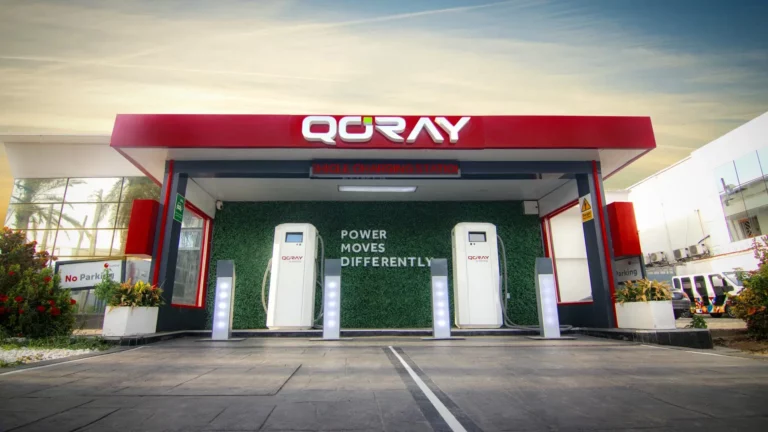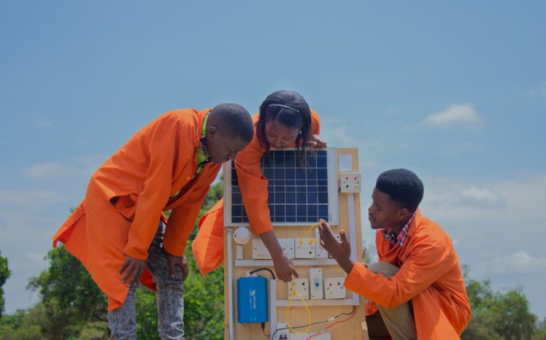By Jessica McDonald
While Senator Bernie Sanders has said “scientists tell us” that it’s possible to go carbon neutral without relying on nuclear power, fellow Democratic presidential candidate Senator Cory Booker, who backs the use of some nuclear energy, has said the data is on his side. Who’s right? Both have a point, but neither is telling the full story.
Most experts agree that Sanders is correct that it’s technologically possible to decarbonize the grid without using nuclear power. But many researchers also say keeping nuclear on the table makes decarbonization easier and more likely.
Sanders, a three-term senator from Vermont, has proposed banning new nuclear power plants and placing a moratorium on existing nuclear power plant license renewals, all while reaching 100% renewable energy by 2030 and “complete decarbonization” by 2050.
Currently, 17% of electricity in the U.S. comes from renewables, including 6.5% from wind, 1.5% from solar and 7% from hydropower.
Booker, a New Jersey senator and a former mayor of Newark, has called for reaching “100% clean energy” in the electricity sector by 2030. His plan includes a $20 billion investment in next-generation advanced nuclear research and development by the end of the next decade.
During power generation, nuclear plants release no greenhouse gases, but they come with additional safety, security and waste disposal challenges.
The candidates’ divide on nuclear power became apparent on September 4 during CNN’s climate crisis town hall, a two-day event in which the 10 leading Democratic presidential hopefuls were quizzed about their approaches to tackling climate change.
After Sanders was asked about his position on nuclear power by a graduate student in the audience, CNN’s chief climate correspondent, Bill Weir, followed up, pointing out that the U.S. gets 20% of its electricity from nuclear, and France gets about 70%. Referencing the amount of land required for solar and wind, Weir asked how it would be possible to go “carbon neutral without nuclear in the short term.”
“I think you can,” Sanders replied. “And I think the scientists tell us, in fact, that we can.” He went on to mention the Fukushima nuclear disaster in 2011 and 1986’s Chernobyl disaster.
Booker, meanwhile, made his counterclaim hours later. “[N]uclear is more than 50 percent of our non-carbon causing energy,” he said. “So people who think that we can get there without nuclear-being part of the blend just aren’t looking at the facts.”
Later, in a September 19 interview with the HuffPost, Booker called out his colleagues who oppose nuclear power, saying, “As much as we say the Republicans when it comes to climate change must listen to science, our party has the same obligation to listen to scientists,” he said. “The data speaks for itself.”
“If we had a president who was going to pull us out of nuclear, we’d be more reliant on fossil fuels,” Booker added. “It’s as simple as that.”
As we’ll explain, there is support for each perspective, although Jesse Jenkins, an energy systems engineer, and professor at Princeton University, said both politicians are “making stronger claims than there’s a scientific basis.” Sanders, Jenkins explained, can point to published studies that outline how one can get to zero-carbon without nuclear. “Those exist,” he said. And bolstering Booker’s side, he said, is the “predominance of the evidence” that suggests the most cost-effective way of decarbonizing would include “some nuclear.”
The debate over nuclear energy isn’t limited to Booker and Sanders, even if relatively few Democratic candidates have addressed nuclear power in their climate plans. Former Vice President Joe Biden backs nuclear technology research, as does entrepreneur Andrew Yang, who views nuclear as a “stopgap” measure and plans on having next-gen reactors up and running by 2027.
Although not written into her climate plan, Senator Elizabeth Warren of Massachusetts said during her town hall segment that she would not build any more nuclear plants and would “start weaning” the country off nuclear energy. Senator Amy Klobuchar of Minnesota also committed to not expanding the number of nuclear plants “unless we can find safe storage.”
Without diving into the details of individual plans, we’ll lay out what scientists know about the role of nuclear energy in decarbonizing the electrical grid.
Nuclear, not necessary
To start, we’ll consider Sanders’ claim that “scientists tell us” that it’s possible to get to a zero-carbon electrical grid without nuclear power.
“The shortest answer is yes, that’s true. Scientists do tell us that we can,” said Drew Shindell, a climate scientist at Duke University’s Nicholas School of the Environment.
Ryan Jones, an expert in electricity systems and a co-founder of Evolved Energy Research, a consulting company that models low-carbon transitions, agreed. “Anyone who says that nuclear is 100% necessary on a technical basis, I would claim, just hasn’t looked at the alternatives in enough detail,” he said in an email.

Most experts FactCheck.org contacted, including those who think nuclear power should remain an option, said that from a technical perspective, nuclear is not needed to decarbonize the grid.
But technically possible is not the same as practically feasible, or the most cost-effective. In that regard, many, although not all, researchers say nuclear — or something like it — is likely to be necessary to some degree. And even if nuclear is ultimately not needed, they say, the safer strategy is not to exclude it.
“All the evidence says it is possible to decarbonize the energy system in the U.S. without using nuclear power,” said Jones. But, he added, there are cases, such as places that don’t have good wind resources, in which building new nuclear plants can reduce the cost of decarbonizing. Depending on the region, he said, “getting to 100% renewable energy is either very expensive or necessitates significant new transmission to import resources from elsewhere.”
That’s where nuclear can be helpful. It doesn’t have to be nuclear — Jones said carbon capture and sequestration, or CCS, for example, would also work. Sanders’ plan, notably, specifically excludes CCS.
Jones also made a point to note that there is a difference between building new nuclear plants, which he said likely wouldn’t be ready to go until after 2030 anyway, and maintaining the nation’s existing reactors. Much of the future of nuclear power depends on the development of advanced technologies, but there is little disagreement that keeping safely operating plants around for as long as possible would be a boon for the climate. “Maintaining our existing fleet is a good way to keep costs low and an accelerated retirement schedule simply makes it that much harder,” he said.
Shindell said that while Sanders is correct in a strict sense, the “more complete” answer is that eliminating nuclear as an option would complicate the effort to decarbonize, requiring the “most extreme” levels of action in other areas to reach the zero-carbon goal. “The more you take away one zero-carbon option,” he said, “the harder you have to push on the others.”
Global assessments
When scientists have modeled the ways the planet as a whole can avoid the worst effects of climate change — and limit warming to 1.5 degrees Celsius above pre-industrial levels — nuclear power is almost always part of the solution. In the Intergovernmental Panel on Climate Change’s 2018 special report, scientists described 85 pathways consistent with limiting warming to 1.5 degrees, or overshooting that threshold and returning to 1.5 degrees or below by 2100.
Shindell, who was one of the coordinating lead authors in the chapter, told us that it was a rare scenario that met or mostly met the 1.5 degrees limit and didn’t have nuclear power in the mix. “Very few, almost none, in fact, can achieve 1.5 without nuclear,” he said. “It’s a very extreme scenario that can do that. And it requires enormous gains in all the zero-carbon sources.”
A large number of scenarios expanded nuclear power, Shindell said, to around double today’s level. He estimated that 90% of the scenarios included nuclear capacity above today’s level, and just one or two scenarios phased out nuclear entirely by 2100.
There are pathways, the report says, that “no longer see a role for nuclear fission by the end of the century.” But none include no nuclear as early as 2030 or 2050.
Because the scenarios are global, the results don’t necessarily mean that the U.S. must keep or expand its nuclear power. And the scenarios are inherently limited to the types of studies scientists do, Shindell said. Still, the IPCC findings suggest that in a broad sense, most roads to success include nuclear reactors.
Consider, too, the IPCC’s Fifth Assessment Report from 2014, which was the first to include scenarios that excluded certain technologies. In the nuclear phase out scenario, eight of nine tested scenarios were able to reach the target CO2 concentration level of 430-480 parts per million or the equivalent of reaching 2 degrees Celsius above pre-industrial levels. But the limitation in technology increased the median costs by 7% (see figure 6.24 and Table SPM.2). The phase-out assumed that existing plants could operate until the end of their lifetime, but did not allow for any new nuclear plants beyond those already under construction.

A 2013 study cited in the 2014 IPCC report used an integrated assessment model to learn what might happen globally if nations stopped building any new nuclear plants in 2020. The authors concluded it was “in principle feasible” to transform the energy system and limit carbon dioxide concentrations to 450 parts per million. But they noted that it would require “massive and rapid expansion” of other low-emissions technology, such as renewables and carbon capture and sequestration.
“This underscores the fact that, in general, nuclear energy can be regarded as a choice rather than a necessity, and different regional and national attitudes toward nuclear energy can be accommodated,” the paper reads. “On the other hand, the forced phase-out of nuclear energy by 2020 would increase the required investments into the energy system transformation and would limit future supply-side flexibility, resulting in comparatively higher costs of CO2.”
Local assessments
On a more local level, such as for individual countries or regions, scientists can perform much more detailed models of the electrical grid or energy system over space and time to determine the viability of various power mixes and their costs. Sometimes, such models are designed to find the lowest-cost option, while others are set up to test the robustness of the system.
What’s clear from these modeling efforts is that the clearest and cheapest path forward to decarbonization is to rapidly expand renewable power, especially wind and solar. In a variety of studies, including those from the National Renewable Energy Laboratory and others, large amounts of renewable power can be added to the grid without sacrificing reliability and without imposing excessively high costs. But there is some disagreement on how far renewables, on their own, can go.
One prominent paper published in the Proceedings of the National Academy of Sciences in 2015 argued that in the U.S., 100% renewable energy is possible at low cost by 2050-2055. But numerous scientists objected to that analysis, and two separate groups, including one with more than 20 authors, published critiques; the original authors also penned rebuttals.
Christopher Clack, the lead author of the primary critique and the founder and CEO of Vibrant Clean Energy, a company that does high-resolution electrical grid modeling, says he has yet to be convinced that 100% renewables are possible in the U.S. In his view, the concept is theoretically possible, but unlikely to be feasible in practice.
“We can get all the way within a model, but in reality, we probably cannot due to the imperfections of forecasts, dispatch, measurements, etc.,” he said. And for him, the cost is not an ancillary issue. “If it is not possible at low-cost, it is not possible in reality,” he said, “because alternatives will be used instead.”
Regardless, each time he’s looked at studies that claim to show a successful 100% renewable grid, he’s found problems. Some models, he said, don’t go into granular enough detail, which can “smear out” challenging times for an all-renewable grid, such as an extreme cold snap. Other papers, he said, rely on an unproven technology or unrealistic costs.
The fundamental issue for renewables, of course, is whether variability and how to handle the times when the wind doesn’t blow and the sun doesn’t shine. In Clack’s view, this challenge can mostly — but not fully — be solved by adding storage and creating a more connected and responsive electrical grid. In 2016, while working for the National Oceanic and Atmospheric Administration, Clack published one of the first “supergrid” papers in Nature Climate Change, which showed that by building out high-voltage, direct-current transmission lines, the U.S. could lower its electricity-sector carbon dioxide emissions by as much as 80% below 1990’s level, without an increase in the cost of electricity.
The National Renewable Energy Laboratory similarly found that existing renewable technology, coupled with a more flexible grid, “is more than adequate” to supply 80% of the nation’s electricity in 2050.
But to actually provide 100% of the nation’s electricity at a reasonable cost, Clack said there needs to be a non-variable source, which could include — but isn’t limited to — nuclear power.
The importance of including some non-variable sources was also underscored in a 2018 review co-authored by Princeton’s Jenkins. That paper, which appeared in the journal Joule, reviewed 40 studies published since the IPCC’s 2014 report that explored pathways on either a global or local scale for “deep decarbonization,” defined as an 80%-100% cut in current CO2 emissions. It found that all 20 of the studies that took an agnostic approach to find the most affordable way to go about deep decarbonization ultimately selected a power mix that included at least one low-carbon “firms” resources, such as nuclear power or fossil fuels coupled with CCS.
As Jenkins explained it, while wind and solar can do the bulk of the work, as renewable penetration approaches 100%, problems emerge and costs rise sharply. He told us that most storage — largely lithium-ion batteries — can help with daily variation, but is insufficient for when the sun and wind stall for weeks at a time over a large geographic area, or what’s known as the “dark doldrums.” Adding even more storage capacity might be able to do the trick, he said, but that storage would be expensive to build and rarely used. The economics of such a scenario is bleak. Even assuming costs fall to less than a third of today’s, Jenkins’ review calculated that it would cost more than $7 trillion to build out enough lithium-ion batteries to store a week’s worth of electricity in the U.S. That’s almost 19 times the amount spent on the nation’s electricity over one year.
Not everyone holds this view. Daniel Kammen, a professor of energy at the University of California, Berkeley, and director of the school’s Renewable & Appropriate Energy Laboratory objected to the 2015 PNAS paper but nevertheless thinks that 100% renewables are an achievable goal. “They are wrong,” he said in an email, adding that 100% clean energy is possible with solar, wind and hydro when supported with storage. Kammen, who is a former science envoy to the State Department under Presidents Barack Obama and Donald Trump, did not reply to further questions but pointed to his lab’s energy system model. In 2016, his group used the model to evaluate costs under a variety of assumptions for a large swath of western North America to reach a target of 85% below 1990 emissions levels by 2050.
Trieu Mai, a senior energy researcher at the National Renewable Energy Laboratory, said the science remains unsettled over the economic viability of the various zero-carbon power options.
“I do not believe there has been sufficient analysis to conclusively say which technologies are necessary to reach zero-emission power or energy systems,” he said in an email. “There is strong consensus in the literature that growth in renewable energy will be required,” he added, “but the extent of this growth (i.e., whether it should reach 100%) is still under debate.”
In the end, the larger question of how to decarbonize the energy system may come down to differences in philosophy rather than the science, which is not clear-cut and involves assumptions about the future.
“There isn’t a single scientific truth here,” said Jenkins. “It’s a debate about priorities and feasibility, which is defined in a number of different ways by a number of different parties.”
For Jenkins, though, banking only on solar and wind would be a “mistake.” “Given the high stakes,” he wrote in his 2018 review, “it would be prudent to expand and improve a wide set of clean energy resources, each of which may fill the critical niche for the firm, low-carbon power should other technologies falter.”
“If we’re really in a ‘climate crisis,’ then you go to war with your full arsenal,” Jenkins said. “You don’t hold anything back. And you don’t purposefully make this crisis harder by limiting our already limited options.”
Source: FactCheck.org








